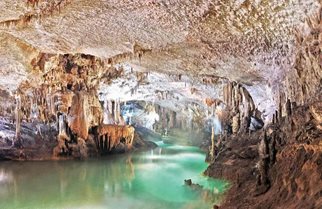Playing is Learning
The Grottos of Lebanon
October 11th, 2016
| Ads | ||
|
Play the Challenge
|
||
|
A New Word is Coined A new Character is revealed A new Game is Afoot |
An Edutainment Adventure Based on Three Rounds of Investigations
|
|
|
Welcome to the World of PROFESsee™by seeCOSM™ PROFESsee™ is my title. I am the perpetual learner, in pursuit of knowledge, wisdom and truth. I derived my name from professor |
 |
|
|
With over 1000 caves explored and reported, Lebanon beams full of different grottos (caves surrounded by water) that speak of nature’s painstaking architectural stance. Nature’s architecture which usually takes millions of years to complete has a sure way of captivating humans. Layers upon layers, slowly but surely, the continuous process evolves with time and tide. For Lebanon, some of these grottos form a part of the nation’s tourism attraction. Of the over 100 caves explored thus far, a few particularly stand out for their spell-bounding beauty, Zeus thunder-like stalactites, and intrinsic relationship between rocks, water and minerals (most especially limestone). These few caves include Jeita grotto, Rouaisse cave, Qadisha cave, Afqa cave and many others. Perhaps of the caves, the Jeita grotto is the most popular of all. The Jeita grotto has two limestone caves layered on top of one another; the upper gallery, and the lower grotto. The lower grotto was already in use prehistorically, but the upper grotto was discovered in 1958 by Lebanese Speleologist from the Spéléo Club du Liban (SCL). There have been many expeditions and explorations into the Jeita cave, but none more riveting than the exploration carried out by W.J. Maxwell and H.G Huxley, working for the Beirut Water Company then, and Reverend Daniel Bliss (the then President of the American University of Beirut). It’s not their processes or methods that made their exploration riveting; rather, it was their act perhaps narcissistic that catches attention. These men recorded their names on a limestone pillar and called it the “Maxwell’s Column”. If that wasn’t enough, one of them thought “Oi mate, what if water washes our names off this pillar?” “No problem!” says the other guy. “Let’s write our names on a sheet of paper, write the details of our expedition as well, and seal it in a bottle.” They concluded. That bottle still exists today, albeit permanently fixed to a stone as a result of lime-filled water. There’ve been other activities or stories that have made some grottos in Lebanon quite popular, and they include:
Can you Buffer to the location? Image courtesy of: http://www.boomsbeat.com/articles/170/20140203/48-stunning-photos-of-jeita-grotto-magnificent-underground-caves-in-lebanon.htm |
||
Latest News / Events
E-mail [email protected]
The Professee™ Newsletter Beta
http://www.seecosm.com/
http://www.seecosm.com/

